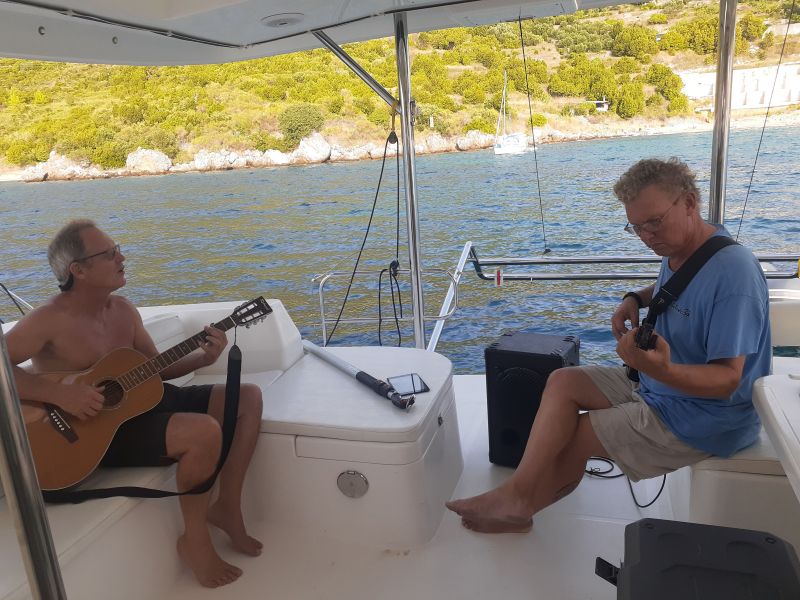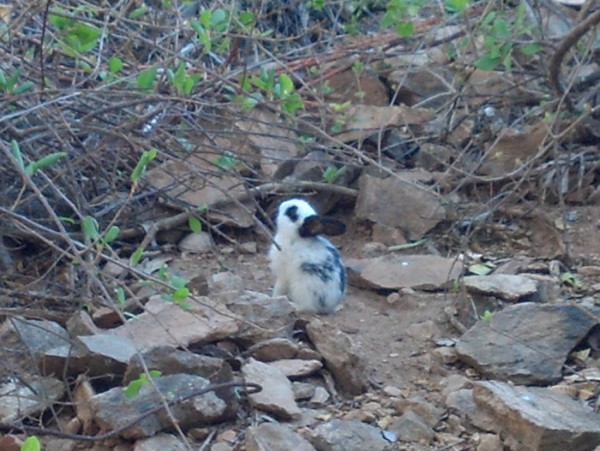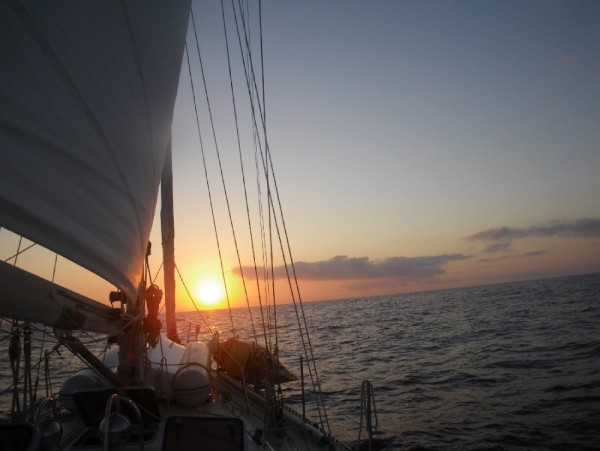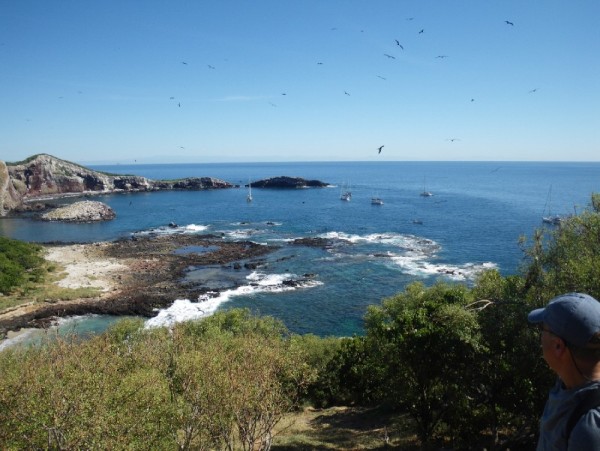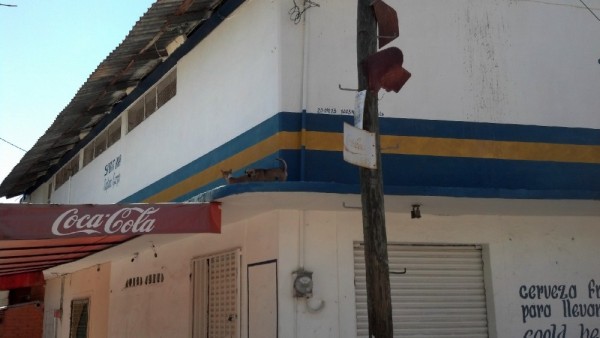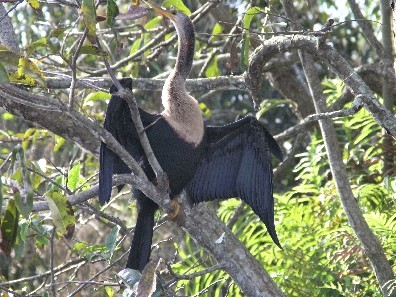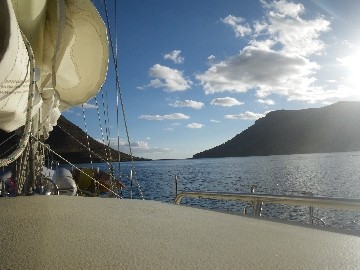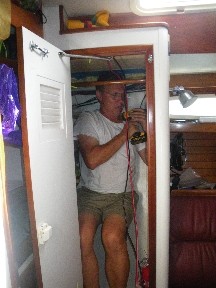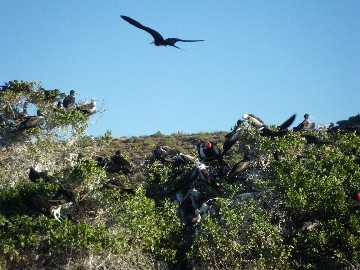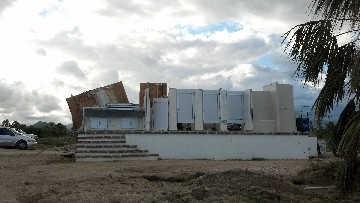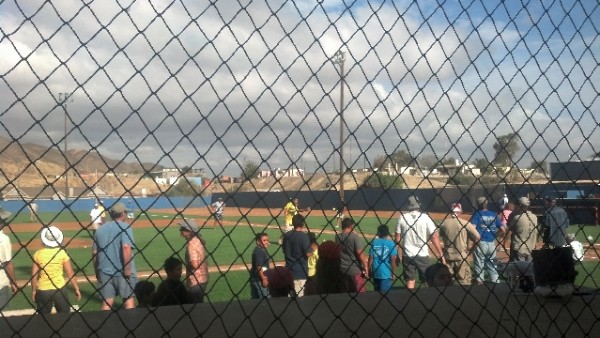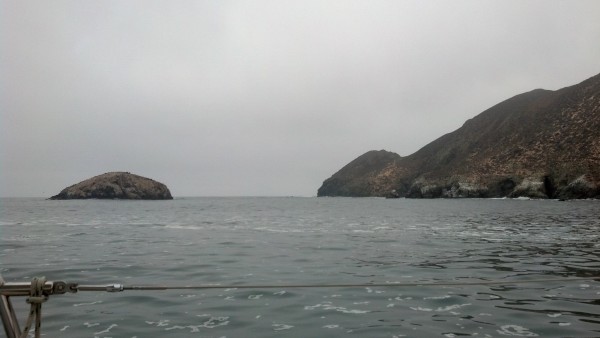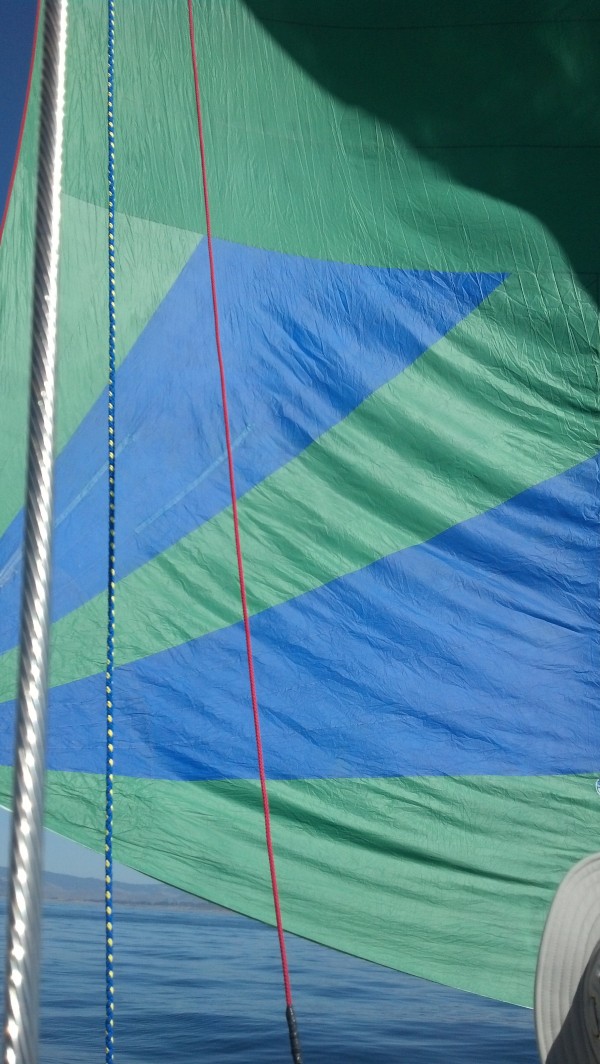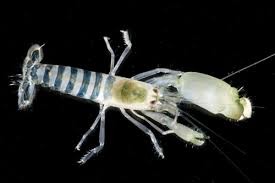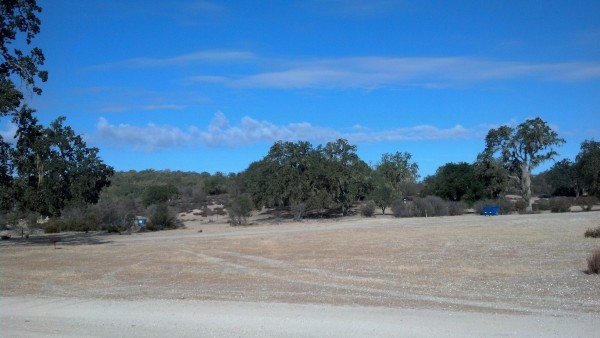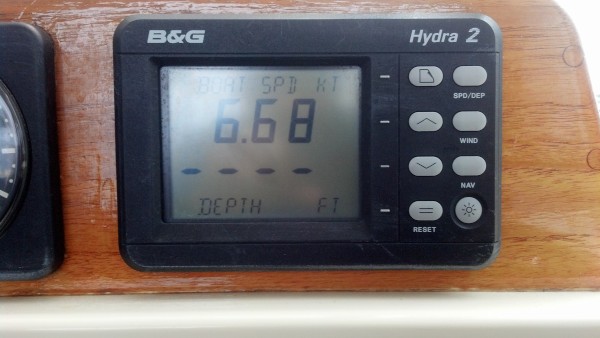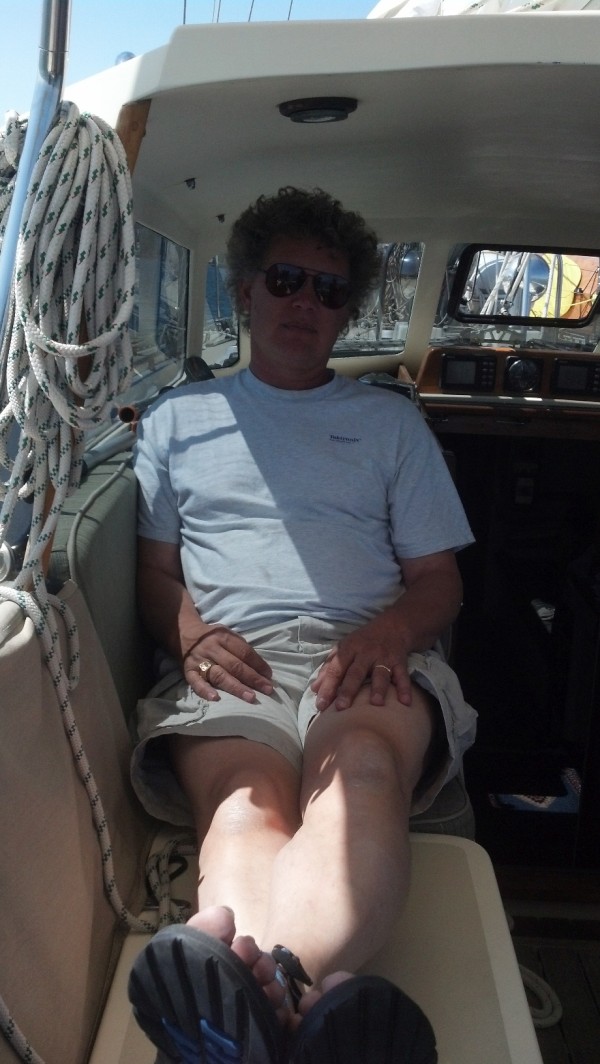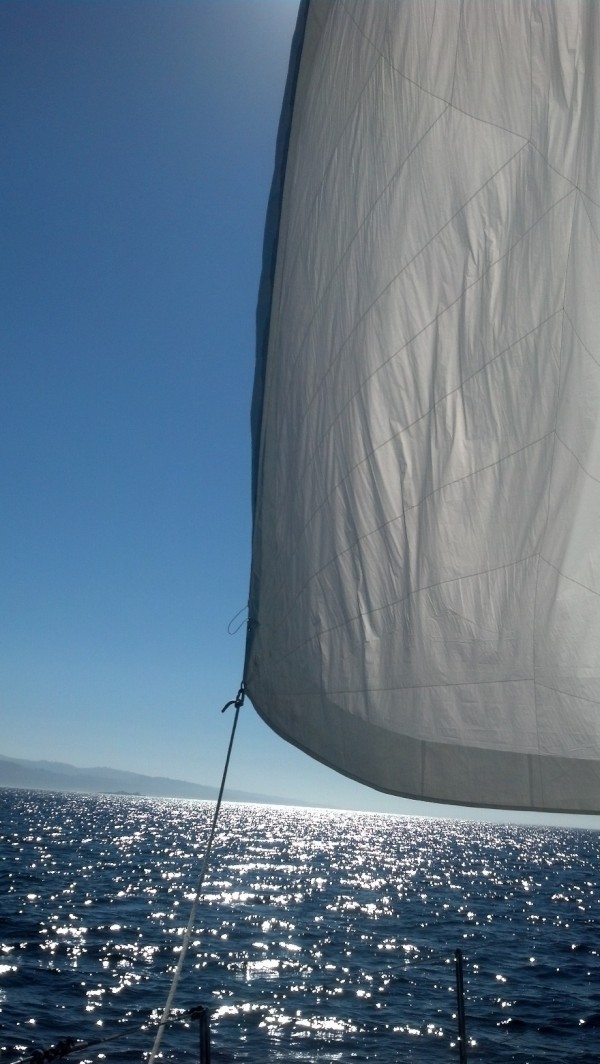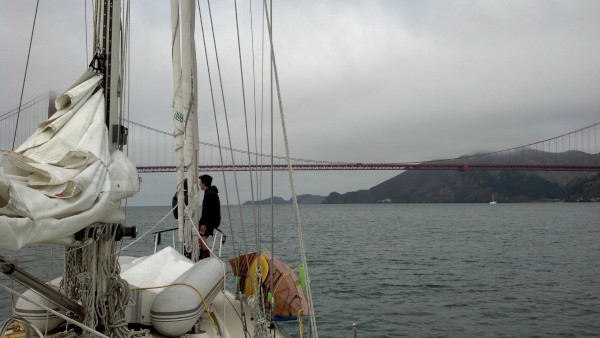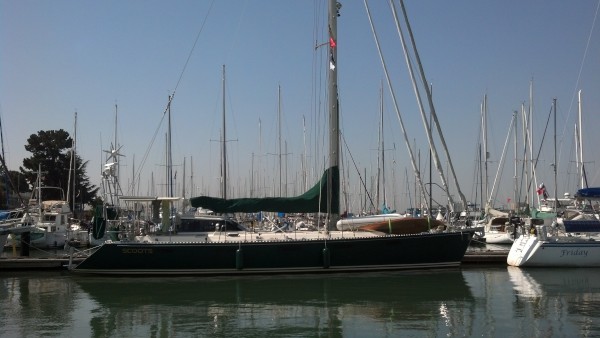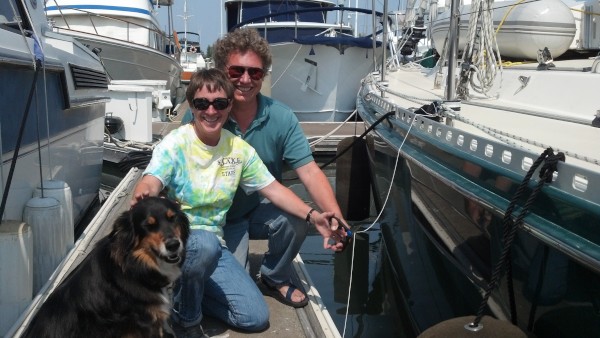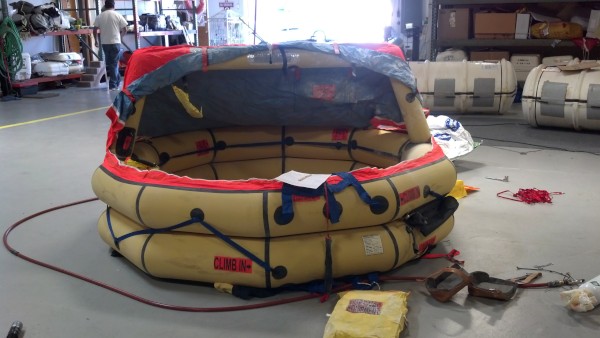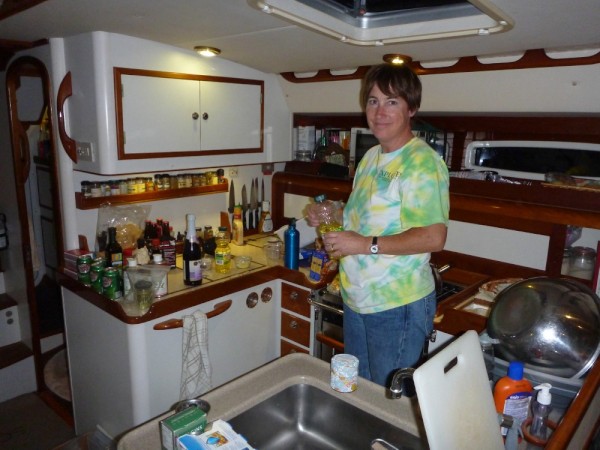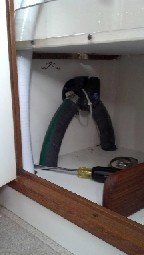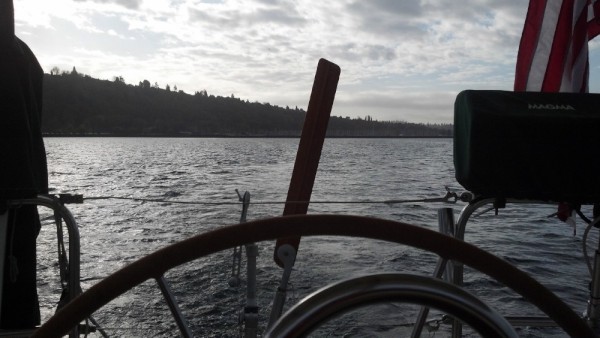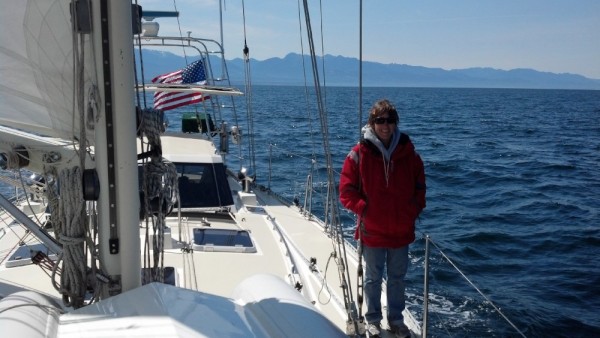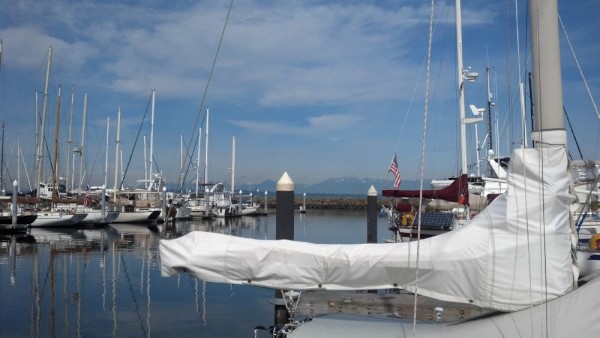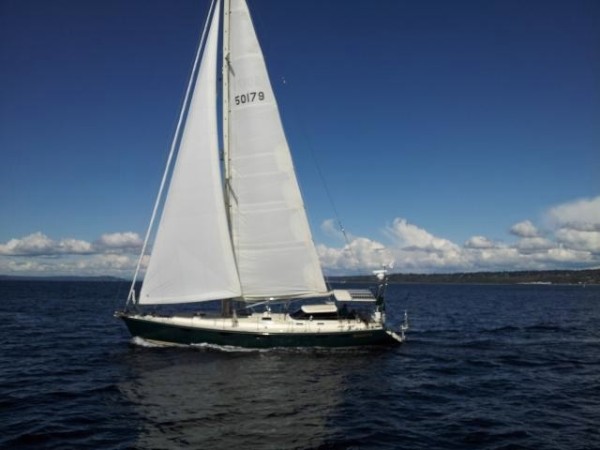
Our Ever-Changing Backyard
14 April 2024 | Zakinthos to Sounion, Greece
27 January 2024 | Preveza to Zakinthos Island, Greece
15 December 2023 | Sarandë, Albania to Preveza, Greece
27 November 2023 | Himarë, Albania
13 November 2023 | Orikum, Albania
30 October 2023 | Durrës, Albania
29 October 2023 | Porto Montenegro to Athens, Greece
22 August 2023 | Montenegro
21 August 2023 | Montenegro
08 August 2023 | Montenegro
02 August 2023
27 July 2023 | Montenegro
04 May 2023
18 April 2023 | Monopoli, Italy - Zadar, Croatia
09 April 2023 | Korčula, Croatia
01 April 2023 | Otok Badija, near Korcula, Croatia
15 March 2023 | Mljet National Park, Croatia
11 December 2022 | Uvala Przina, Pelješac Peninsula, Croatia
20 November 2022 | Uvala Podškolj, Croatia
05 November 2022 | Lopud, Croatia
Korčula - walking in my ancestors' footsteps
09 April 2023 | Korčula, Croatia
Vandy Shrader
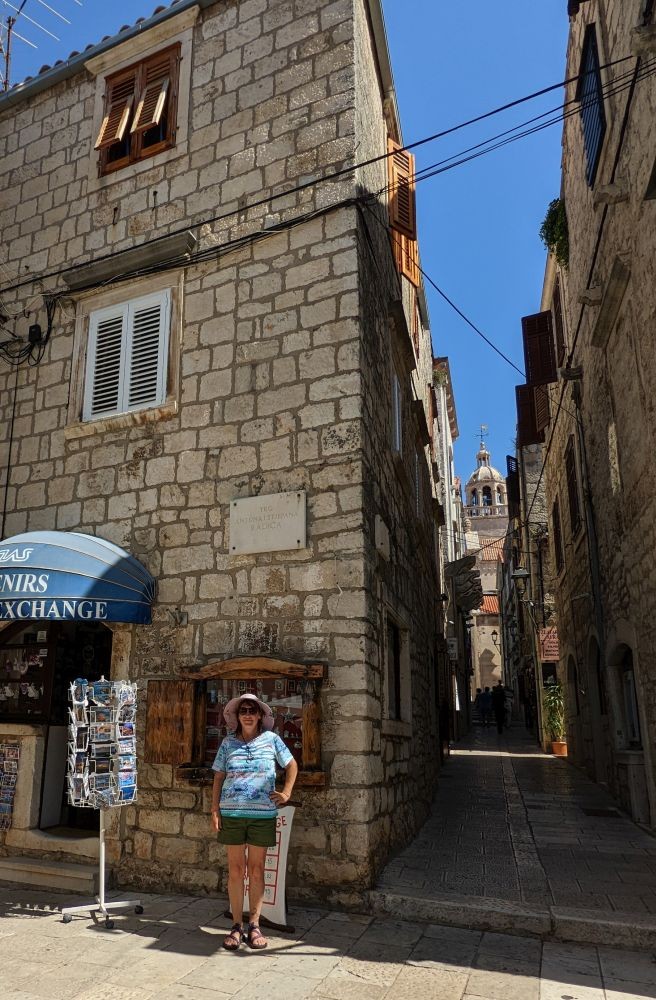
Enough, and the blessing of fjaka
If you read our previous blog post, you'll remember that I mentioned Pizzeria Tedeschi.
Why Pizzeria Tedeschi?
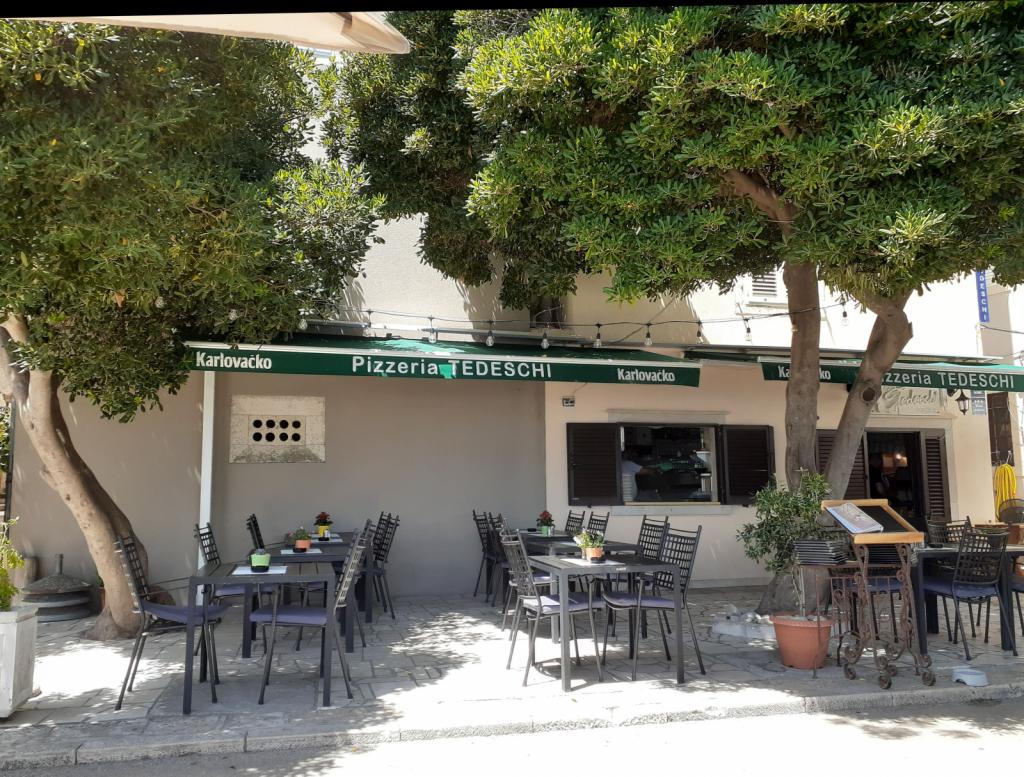
It began with my dad's trip to Korčula in 2013. He'd come to see the place where some of his ancestors had lived, and had rented one of the Tedeschi Apartments, above Pizzeria Tedeschi. While he was there, he'd struck up a friendship with Ivo and Katja Tedeschi, the owners of the building. Ivo had been instrumental in helping my dad to find artifacts associated with his ancestors, including the house that they had lived in, handwritten records of their births in an old book, and a plaque in one of Korčula's churches, bearing the names of several of our ancestors.
In return, my dad had created a sign for Ivo's apartment that read "Tedeschi Aparments. The best in Croatia," which Ivo displays with pride. My sister and brother-in-law had recently enjoyed two weeks in one of the Tedeschi Apartments, and had also gotten to know Ivo quite well.
Now it was my turn. We took a seat at one of the outdoor tables and ordered pizzas and beers.
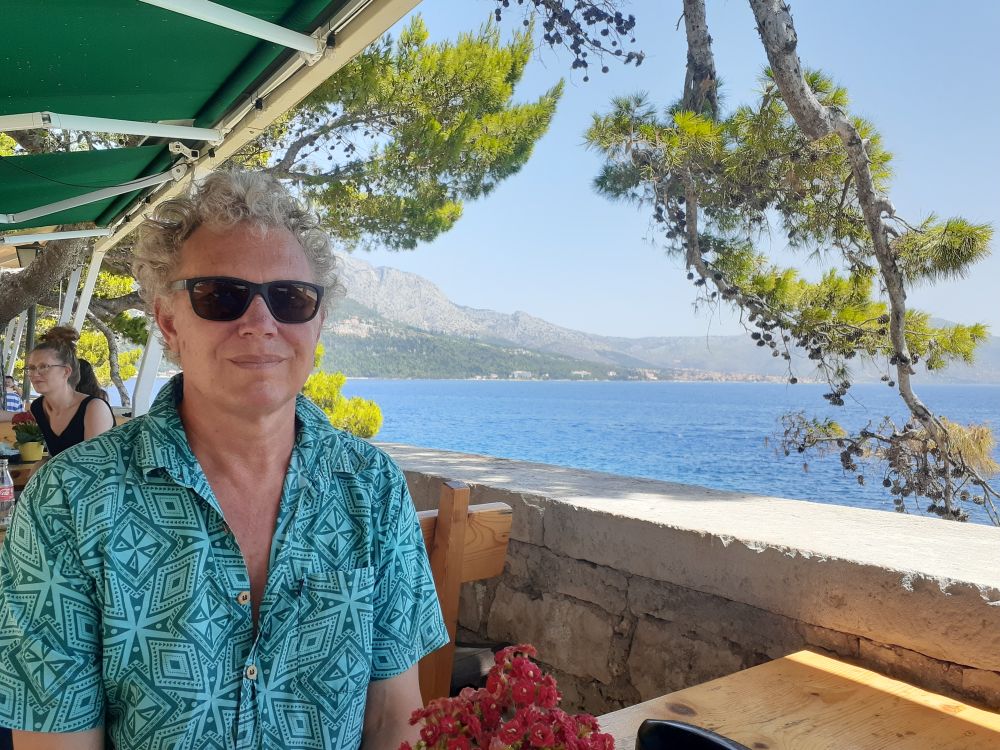
Nice scenery for a pizzeria
The waiter said that Ivo was in town somewhere and would be back soon. When Ivo returned, the waiter sent him over to us. When I told him my name - including my maiden name, Piantanida - Ivo's face broke into a huge smile.
"Tom's other daughter!" he said. "Welcome." He slid into the bench seat beside me, ordered a beer for himself - and another round for Eric and me - and settled in for a chat.
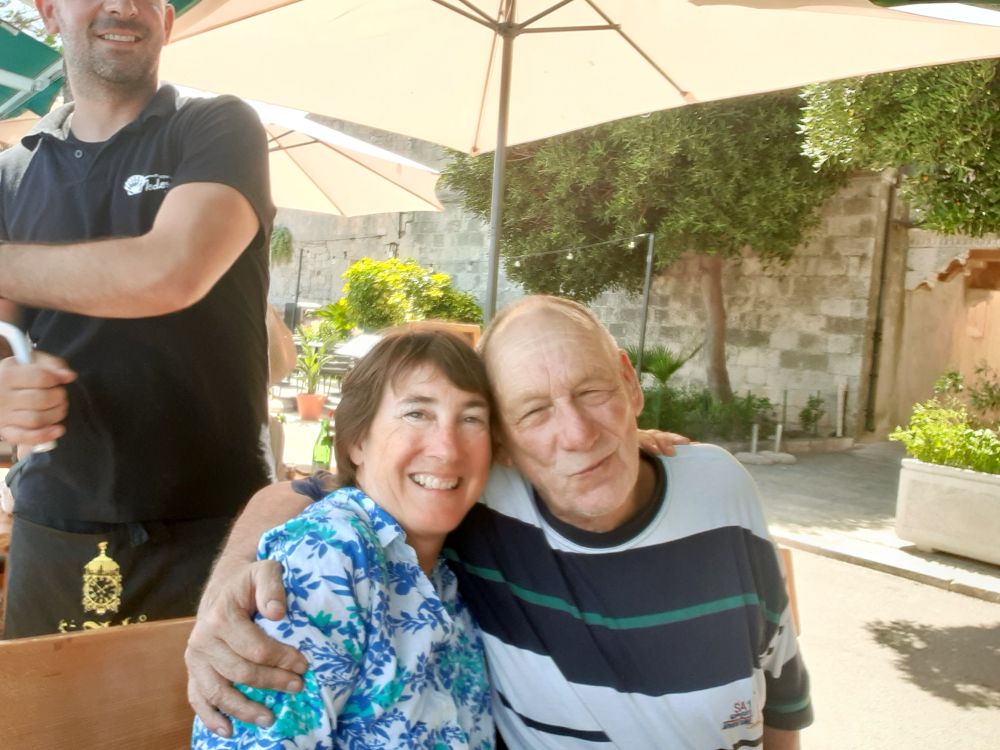
Van and Ivo
Over the next hour we talked about all kinds of things - about my dad, my sister, Eric, and me. About Ivo. About Korčula, and elements of Croatian culture. When we left, we were full of beer and pizza - the best pizza we had during our time in Croatia, no kidding - and stories. Lots of stories.
Ivo told us that he'd been a diver for many years, and had done many different things during his life. "I am happy with what I do now," he told us, "which is what I want to do. It is enough."
Enough. How many people do you know, who feel that they have enough, and are satisfied with what they have? This sense of having enough - paired with the absence of always trying to accumulate more, to get ahead - is one of the aspects of Croatian culture that you can feel when you're immersed in it. Things flow along leisurely here; no one is rushing. It's relaxing.
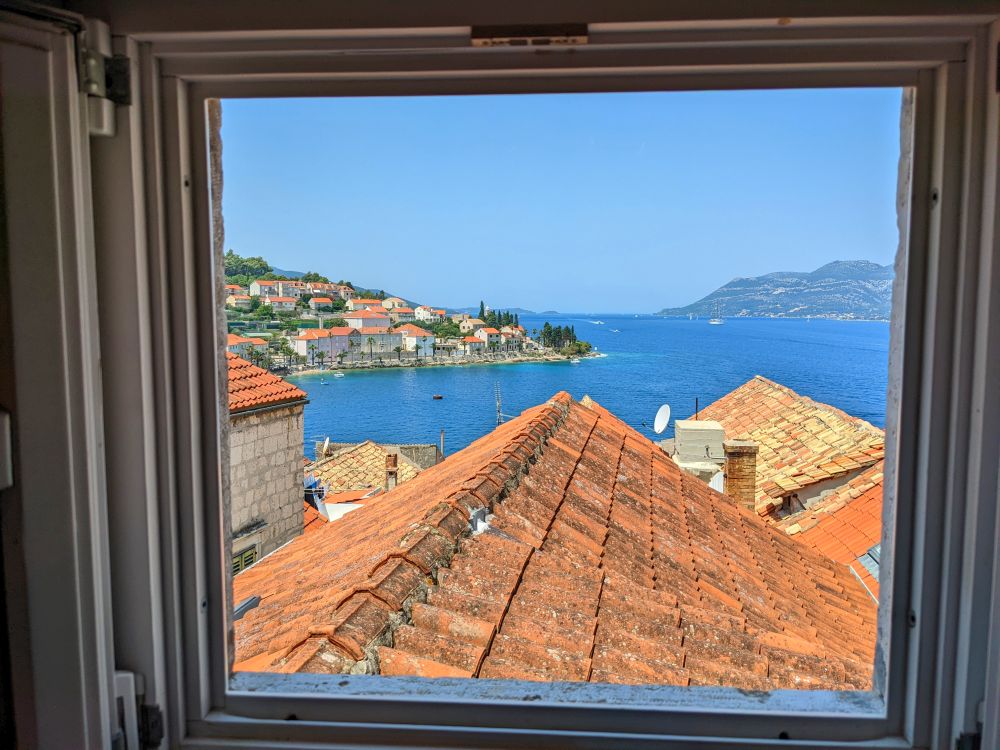
View from a window
Another day, when we sat down at one of the half-dozen tables at the Konoba Marco Polo (konoba being a tavern, or restaurant), intending to have lunch. A friendly waiter - the only waiter - introduced himself as Antonio. After taking our order, he came back and had a chat, even sitting down with us for a little while. He told us how he'd gotten fed up with the many rude customers he'd had to serve, in a more popular part of the town, and how he'd decided to take a job at the Marco Polo, because it was quieter. He told us about himself, and his family, and asked about us and ours. He told us how he'd wanted to spend more time with his growing family, so he works 16-hour days during the summer and then has the rest of the year off - for family time. He referred to himself as "a happy peasant" who has enough in his life. Enough. There's that word again.
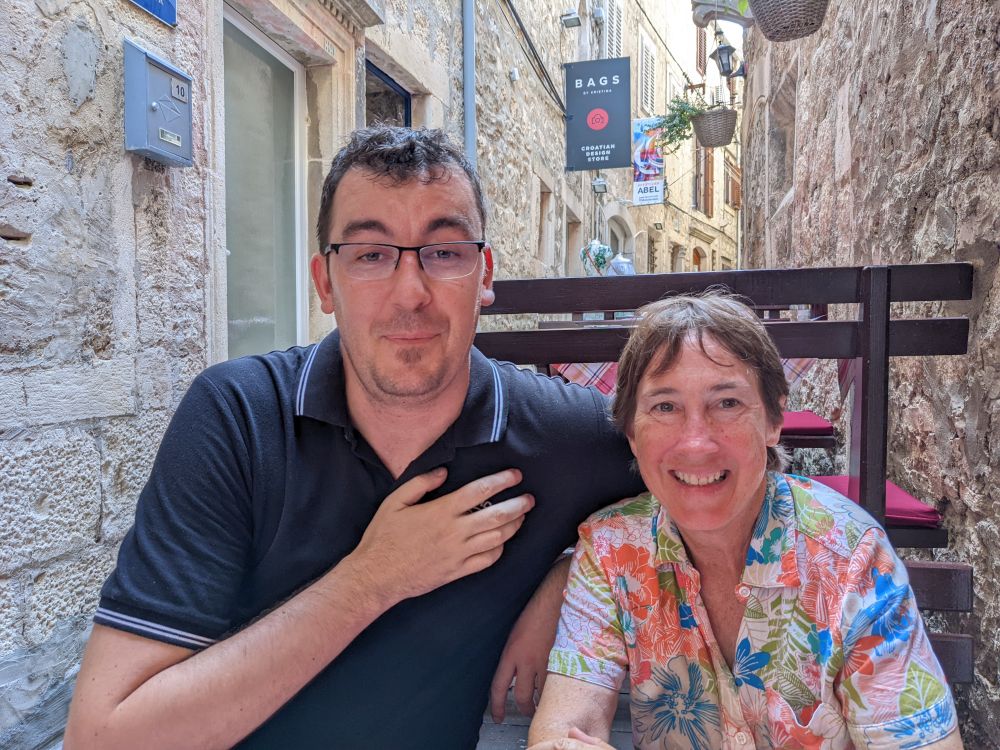
Van and the "happy peasant"
Taking this a step further, the Croatians (Dalmations, in particular) have a term - fjaka - that embodies the essence of their relationship to life. Translated as "the sweetness of doing nothing," or "a sublime state in which a human aspires for nothing," Croatians consider fjaka to be a gift from God. And on a sweltering summer day it's easy to see why fjaka would be a blessing.
A tour of the town
Ivo introduced us to one of his nieces, Andrea, who took us on an evening tour of Korčula. At 6pm, the summer heat was draining from the air, and the sun would still be up for several hours. It was a perfect time to see the old town. Andrea's tour incorporated some history, including the story of Korčula's "revolving door" occupation by nearly a dozen different kingdoms or nations.
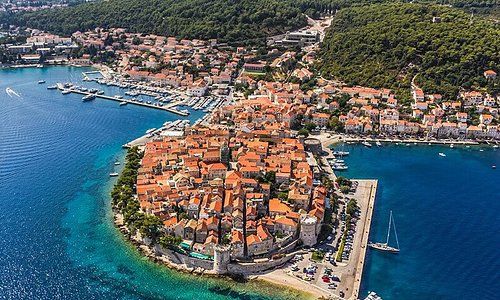
Old town Korčula
Some culture: we learned about city life and played a game on a game board etched in stone in the covered area outside the town hall, where generations of Korčulans had done the same.
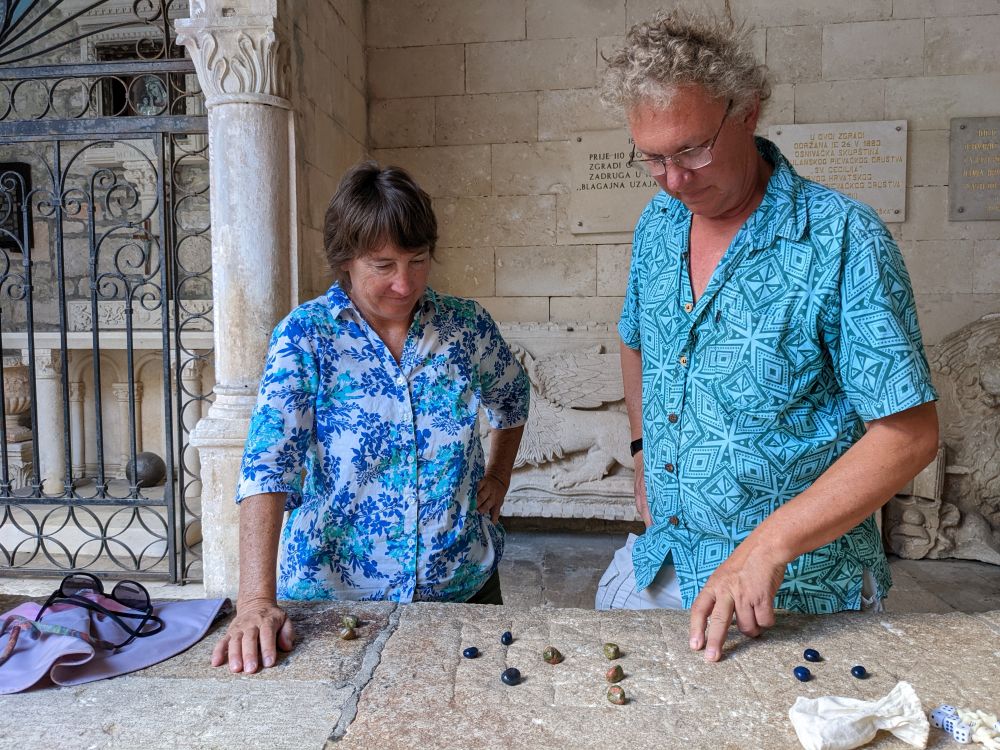
Eric won
Some city planning: the Greeks designed Korčula with a "fishbone" plan, with one central street and others branching from it, in a particular way. In Korčula, where the afternoon sea breeze blows from the west, the streets branching off from the west side of the main street are straight, to allow the cooling breeze to blow into the town.

The streets branching off to the east are curved, to prevent the cold, fierce, winter bora winds, that blow from the east or northeast, from penetrating into the city.

Also, the streets are offset where they meet each other, making it hard for any pesky invaders or particularly strong winds to infiltrate the town. The heights of the floors and the locations of the windows across the narrow streets are also offset, so that neighbors don't look straight into each other's homes.
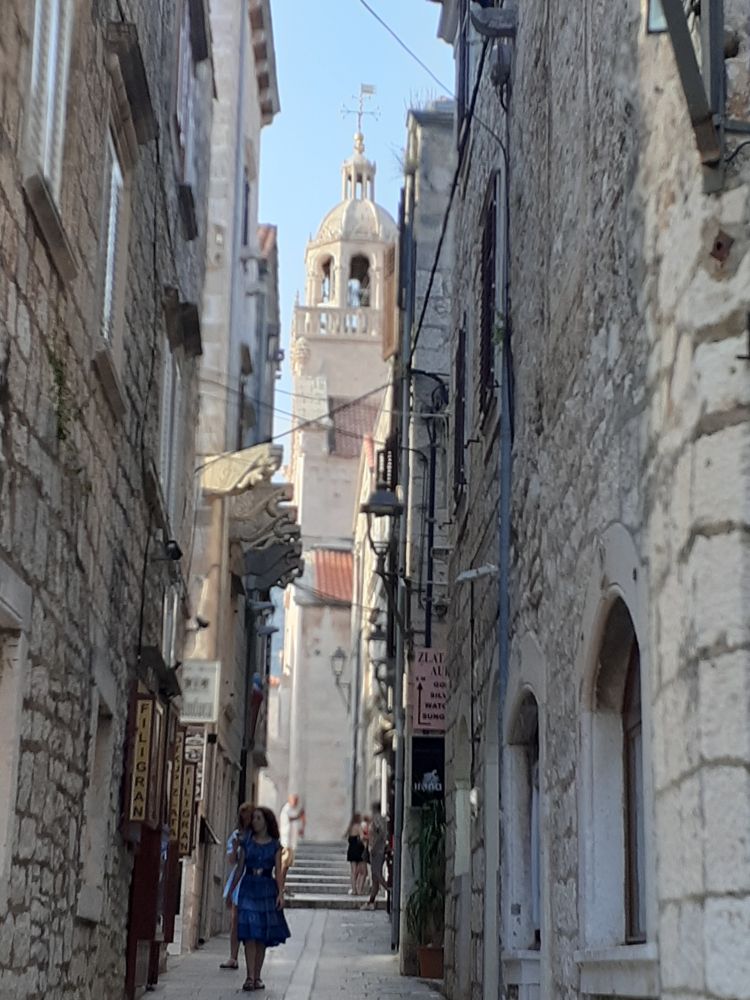
Greek city planners incorporated all of these design elements, to create comfortable living arrangements for Korčula's residents. More than two thousand years ago!
Some botany: Andrea pointed out that the pretty green vines spilling out of gaps and niches on many of the stone walls, with flowers resembling mimosas, were caper bushes (Capparis spinosa).
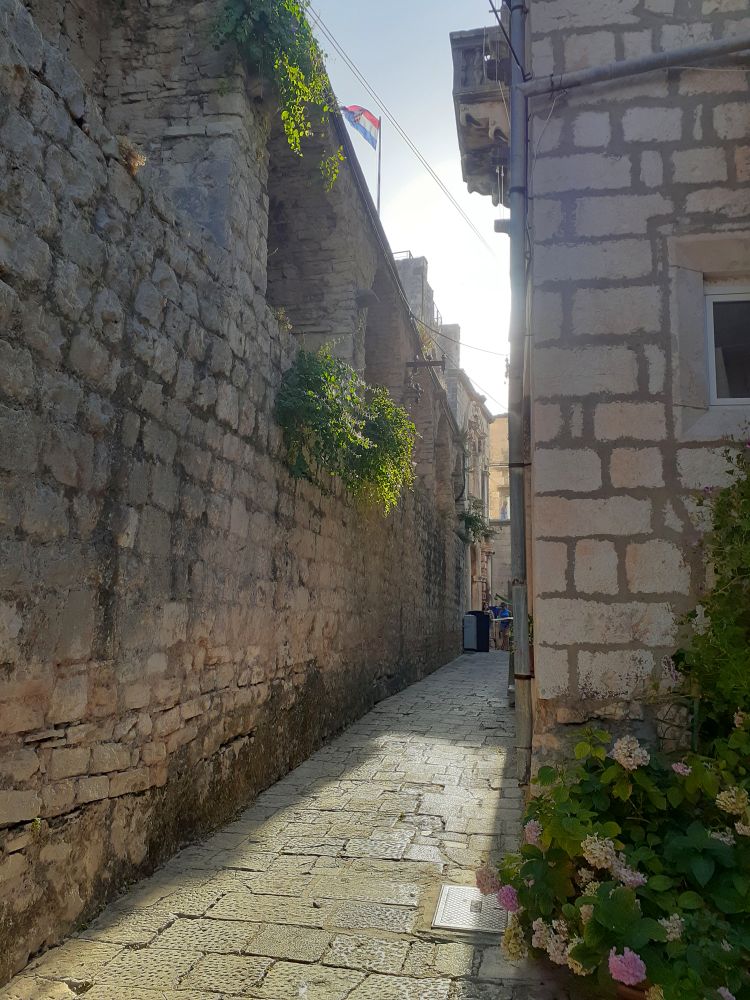
Caper bushes
Their little buds are the capers we buy in the grocery store. Once she pointed them out, I saw them everywhere in Croatia.
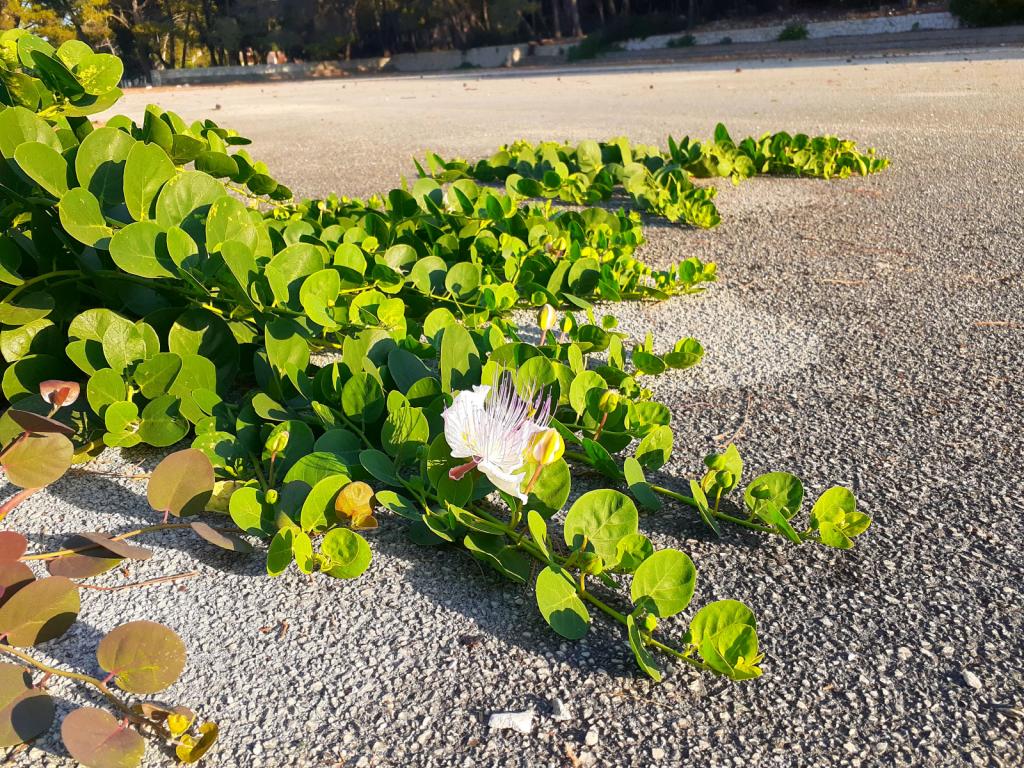
Caper plant with flower
Some mythology: one of Korčula's claims to fame is that Marco Polo was born there. This may or may not be true, but the Marco Polo House and Museum is there for your viewing pleasure, and your entry fee, nonetheless.
In the footsteps of my ancestors
During the three weeks that we were anchored at Badija, we visited Korčula lots of times, always timing our visits to coincide with midday, so that we could have lunch there. We loved to ferret out small cafes, consisting of two or three tables tucked along one of Korčula's fishbone maze of streets, where we'd enjoy pizza, pasta, grilled fish, grilled meat, or čevapi (small Balkan grilled sausages), and split a beer.

A typical side-street restaurant
My great-grandfather, Pasquale, was the first of my direct lineage to emigrate from Korčula. It is my direct lineage to him that is providing the basis for our application for Croatian citizenship. In 1907, he boarded a ship in Trieste that was bound for New York City. Once there, he met up with his older brother, Michael, and began his new life in New Jersey. He met his wife there, had three sons, and spent the rest of his life as an American.
We visited the house where Pasquale and some of my other ancestors had lived. It was cool to see it, even though it's now got a souvenir shop on the ground floor.

Van in front of the Piantanida house
I imagined my great-grandfather as a boy, running down the stairs to go play with his friends, my great-great-grandmother cooking dinner in the kitchen, and my great-great-grandfather having conversations with the other men, in the covered central area, maybe even playing the game carved into the stone there.
In the nearby church, St. Michael's, we saw the plaque that had the names of many of the church's members, including many of my ancestors.
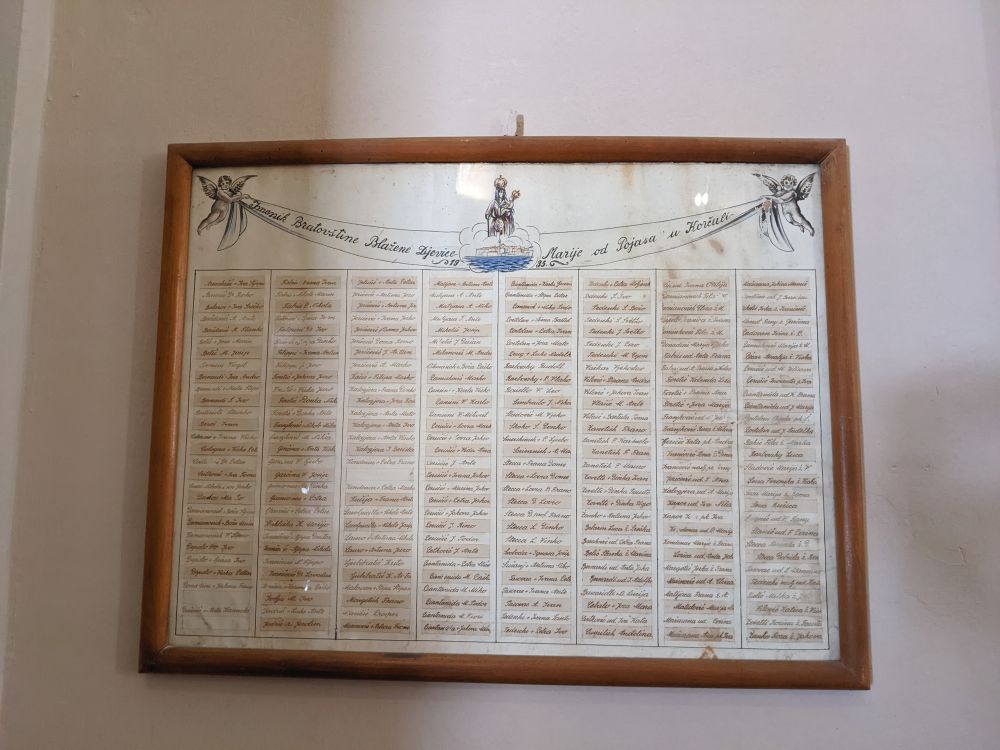

Some of my relatives (in yellow) and my great-great-grandfather's name (red *)
It was really cool, to walk the same stone streets that my ancestors had trod, back in the day. But it was also really cool, that people are still living there today, going about their 21st Century lives in the same stone buildings that have stood there for centuries.

A colorful courtyard
We enjoyed our time in Korčula and Badija, but eventually it was time for us to move on, to see some more of Croatia.
If you read our previous blog post, you'll remember that I mentioned Pizzeria Tedeschi.
Why Pizzeria Tedeschi?

It began with my dad's trip to Korčula in 2013. He'd come to see the place where some of his ancestors had lived, and had rented one of the Tedeschi Apartments, above Pizzeria Tedeschi. While he was there, he'd struck up a friendship with Ivo and Katja Tedeschi, the owners of the building. Ivo had been instrumental in helping my dad to find artifacts associated with his ancestors, including the house that they had lived in, handwritten records of their births in an old book, and a plaque in one of Korčula's churches, bearing the names of several of our ancestors.
In return, my dad had created a sign for Ivo's apartment that read "Tedeschi Aparments. The best in Croatia," which Ivo displays with pride. My sister and brother-in-law had recently enjoyed two weeks in one of the Tedeschi Apartments, and had also gotten to know Ivo quite well.
Now it was my turn. We took a seat at one of the outdoor tables and ordered pizzas and beers.

Nice scenery for a pizzeria
The waiter said that Ivo was in town somewhere and would be back soon. When Ivo returned, the waiter sent him over to us. When I told him my name - including my maiden name, Piantanida - Ivo's face broke into a huge smile.
"Tom's other daughter!" he said. "Welcome." He slid into the bench seat beside me, ordered a beer for himself - and another round for Eric and me - and settled in for a chat.

Van and Ivo
Over the next hour we talked about all kinds of things - about my dad, my sister, Eric, and me. About Ivo. About Korčula, and elements of Croatian culture. When we left, we were full of beer and pizza - the best pizza we had during our time in Croatia, no kidding - and stories. Lots of stories.
Ivo told us that he'd been a diver for many years, and had done many different things during his life. "I am happy with what I do now," he told us, "which is what I want to do. It is enough."
Enough. How many people do you know, who feel that they have enough, and are satisfied with what they have? This sense of having enough - paired with the absence of always trying to accumulate more, to get ahead - is one of the aspects of Croatian culture that you can feel when you're immersed in it. Things flow along leisurely here; no one is rushing. It's relaxing.

View from a window
Another day, when we sat down at one of the half-dozen tables at the Konoba Marco Polo (konoba being a tavern, or restaurant), intending to have lunch. A friendly waiter - the only waiter - introduced himself as Antonio. After taking our order, he came back and had a chat, even sitting down with us for a little while. He told us how he'd gotten fed up with the many rude customers he'd had to serve, in a more popular part of the town, and how he'd decided to take a job at the Marco Polo, because it was quieter. He told us about himself, and his family, and asked about us and ours. He told us how he'd wanted to spend more time with his growing family, so he works 16-hour days during the summer and then has the rest of the year off - for family time. He referred to himself as "a happy peasant" who has enough in his life. Enough. There's that word again.

Van and the "happy peasant"
Taking this a step further, the Croatians (Dalmations, in particular) have a term - fjaka - that embodies the essence of their relationship to life. Translated as "the sweetness of doing nothing," or "a sublime state in which a human aspires for nothing," Croatians consider fjaka to be a gift from God. And on a sweltering summer day it's easy to see why fjaka would be a blessing.
A tour of the town
Ivo introduced us to one of his nieces, Andrea, who took us on an evening tour of Korčula. At 6pm, the summer heat was draining from the air, and the sun would still be up for several hours. It was a perfect time to see the old town. Andrea's tour incorporated some history, including the story of Korčula's "revolving door" occupation by nearly a dozen different kingdoms or nations.

Old town Korčula
Some culture: we learned about city life and played a game on a game board etched in stone in the covered area outside the town hall, where generations of Korčulans had done the same.

Eric won
Some city planning: the Greeks designed Korčula with a "fishbone" plan, with one central street and others branching from it, in a particular way. In Korčula, where the afternoon sea breeze blows from the west, the streets branching off from the west side of the main street are straight, to allow the cooling breeze to blow into the town.

The streets branching off to the east are curved, to prevent the cold, fierce, winter bora winds, that blow from the east or northeast, from penetrating into the city.

Also, the streets are offset where they meet each other, making it hard for any pesky invaders or particularly strong winds to infiltrate the town. The heights of the floors and the locations of the windows across the narrow streets are also offset, so that neighbors don't look straight into each other's homes.

Greek city planners incorporated all of these design elements, to create comfortable living arrangements for Korčula's residents. More than two thousand years ago!
Some botany: Andrea pointed out that the pretty green vines spilling out of gaps and niches on many of the stone walls, with flowers resembling mimosas, were caper bushes (Capparis spinosa).

Caper bushes
Their little buds are the capers we buy in the grocery store. Once she pointed them out, I saw them everywhere in Croatia.

Caper plant with flower
Some mythology: one of Korčula's claims to fame is that Marco Polo was born there. This may or may not be true, but the Marco Polo House and Museum is there for your viewing pleasure, and your entry fee, nonetheless.
In the footsteps of my ancestors
During the three weeks that we were anchored at Badija, we visited Korčula lots of times, always timing our visits to coincide with midday, so that we could have lunch there. We loved to ferret out small cafes, consisting of two or three tables tucked along one of Korčula's fishbone maze of streets, where we'd enjoy pizza, pasta, grilled fish, grilled meat, or čevapi (small Balkan grilled sausages), and split a beer.

A typical side-street restaurant
My great-grandfather, Pasquale, was the first of my direct lineage to emigrate from Korčula. It is my direct lineage to him that is providing the basis for our application for Croatian citizenship. In 1907, he boarded a ship in Trieste that was bound for New York City. Once there, he met up with his older brother, Michael, and began his new life in New Jersey. He met his wife there, had three sons, and spent the rest of his life as an American.
We visited the house where Pasquale and some of my other ancestors had lived. It was cool to see it, even though it's now got a souvenir shop on the ground floor.

Van in front of the Piantanida house
I imagined my great-grandfather as a boy, running down the stairs to go play with his friends, my great-great-grandmother cooking dinner in the kitchen, and my great-great-grandfather having conversations with the other men, in the covered central area, maybe even playing the game carved into the stone there.
In the nearby church, St. Michael's, we saw the plaque that had the names of many of the church's members, including many of my ancestors.


Some of my relatives (in yellow) and my great-great-grandfather's name (red *)
It was really cool, to walk the same stone streets that my ancestors had trod, back in the day. But it was also really cool, that people are still living there today, going about their 21st Century lives in the same stone buildings that have stood there for centuries.

A colorful courtyard
We enjoyed our time in Korčula and Badija, but eventually it was time for us to move on, to see some more of Croatia.
Comments
| Vessel Name: | Awildian, previously SCOOTS (2012-2021) |
| Vessel Make/Model: | Leopard 48 |
| Hailing Port: | San Francisco, CA |
| Crew: | Eric and Vandy Shrader |
| About: | We've been living aboard full time since September 2014. We sailed our Able Apogee 50, SCOOTS, from 2012-2021, and are now aboard our Leopard 48, Awildian, since March 2022. |
| Social: |
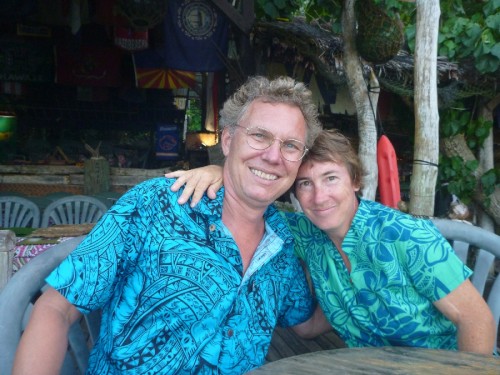
Who: Eric and Vandy Shrader
Port: San Francisco, CA


